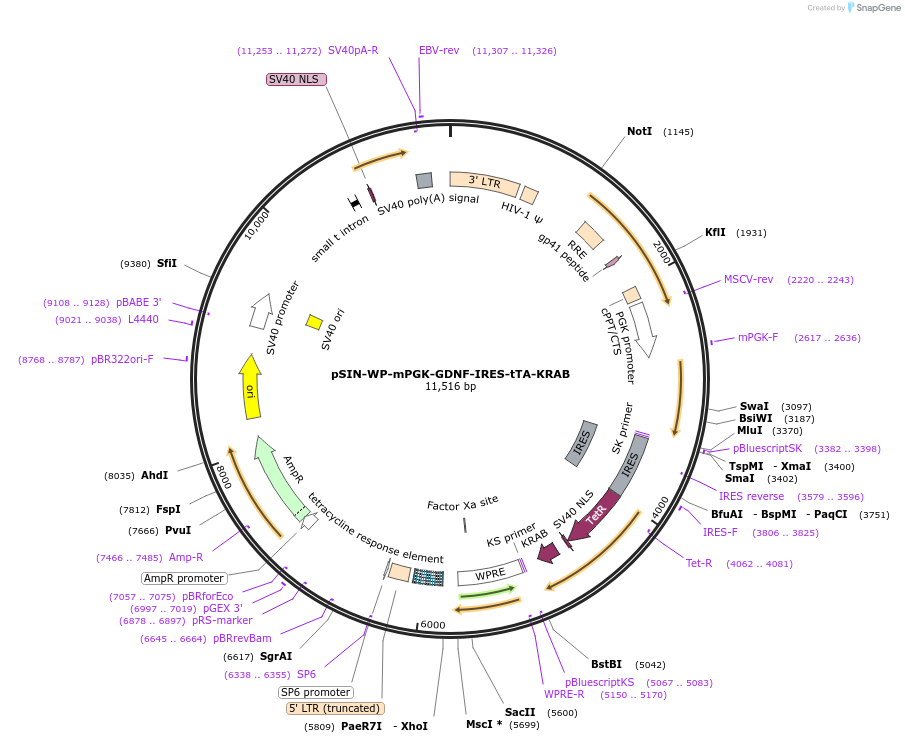pSIN-WP-mPGK-GDNF-IRES-tTA-KRAB
(Plasmid
#225488)
-
PurposeTet-on lentiviral vector for controlled expression of GDNF
-
Depositing Lab
-
Sequence Information
Ordering
| Item | Catalog # | Description | Quantity | Price (USD) | |
|---|---|---|---|---|---|
| Plasmid | 225488 | Standard format: Plasmid sent in bacteria as agar stab | 1 | $85 | |
Backbone
-
Vector backbonepSIN-WP-mPGK-GDNF
-
Vector typeMammalian Expression, Lentiviral
Growth in Bacteria
-
Bacterial Resistance(s)Ampicillin, 100 μg/mL
-
Growth Temperature37°C
-
Growth Strain(s)NEB Stable
-
Copy numberHigh Copy
Gene/Insert
-
Gene/Insert nameTetracycline-controlled transactivator fused with Krüppel-associated box (KRAB) domain following an internal ribosome entry site
-
Alt nameIRES-tTA-KRAB
-
Alt nameIRES-tTR-KRAB
-
SpeciesSynthetic
-
Insert Size (bp)2935
- Promoter Mouse phosphoglycerate kinase 1
Cloning Information
- Cloning method Restriction Enzyme
- 5′ cloning site XbaI (not destroyed)
- 3′ cloning site XbaI (not destroyed)
- 5′ sequencing primer ccgctgagcaatggaagcg
- 3′ sequencing primer gatttaggtgacactatag (Common Sequencing Primers)
Resource Information
-
Supplemental Documents
Terms and Licenses
-
Academic/Nonprofit Terms
-
Industry Terms
- Not Available to Industry
Trademarks:
- Zeocin® is an InvivoGen trademark.
These plasmids were created by your colleagues. Please acknowledge the Principal Investigator, cite the article in which the plasmids were described, and include Addgene in the Materials and Methods of your future publications.
-
For your Materials & Methods section:
pSIN-WP-mPGK-GDNF-IRES-tTA-KRAB was a gift from Robert Gross (Addgene plasmid # 225488 ; http://n2t.net/addgene:225488 ; RRID:Addgene_225488) -
For your References section:
C3 transferase gene therapy for continuous conditional RhoA inhibition. Gutekunst CA, Tung JK, McDougal ME, Gross RE. Neuroscience. 2016 Dec 17;339:308-318. doi: 10.1016/j.neuroscience.2016.10.022. Epub 2016 Oct 13. 10.1016/j.neuroscience.2016.10.022 PubMed 27746349






